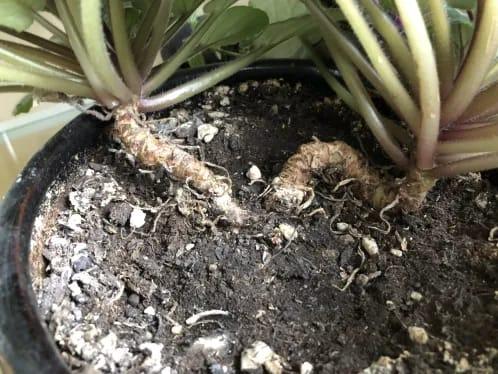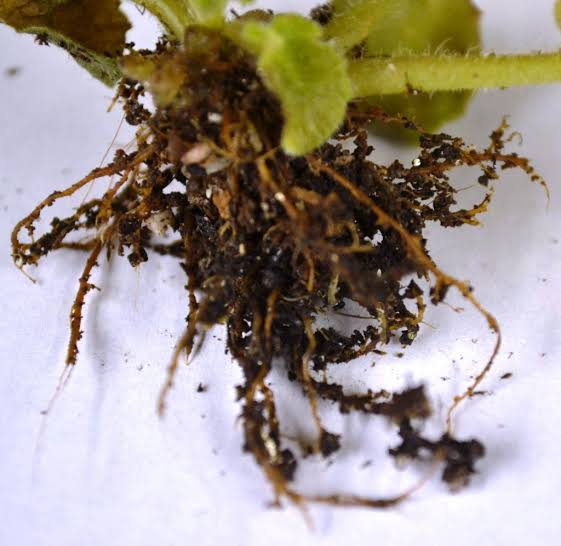African Violet Plant
African Violets are popular indoor plants appreciated for their charming flowers. They thrive in bright, indirect light and well-drained soil. Keep the soil consistently moist, but avoid water on the leaves to prevent rot. Regular feeding supports their blooming.
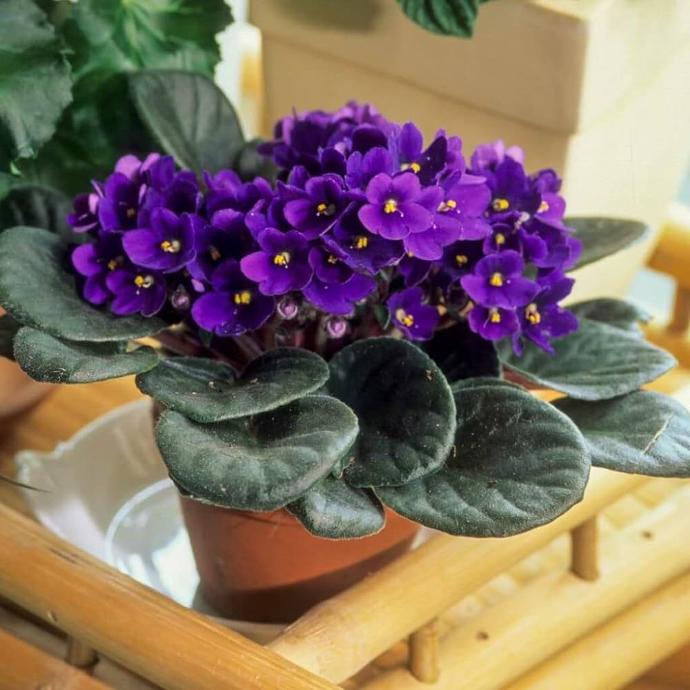
Habit
Perennial
Height
6-12 inches
Growth
Moderate
Soil
Well Drained, Loamy
Shade
Partial shade to Full Sun
Moisture
Moist
Edible
No
Medicinal
No
Origin
Tanzania
Climatic Condition
Tropical, Humid
Temperature (°)
18-20°C
Humidity (%)
50-70%
Potting media
Peat+Perlite
Fertilizers
Low Nitrogen(5:10:10)
Watering
Moderate, Avoid Wet leaves
Plant Weight
50-200g
Flowering Time
Year Round
Soil Ph level
5.8-6.5
Water Ph level
6.0-7.0
Soil EC
1-2 dS/m
Yield Per Plant
Ornamental
NPK ratio
5:10:10
life Span
2-4 yrs
Health Benefits
Reduce Stress
Suggested Grow Media or Potting Mix ?
50% peat moss, 30% perlite, 20% vermiculite
Suggested Fertigation/Fertilizers
Fertilize weekly with a balanced, water-soluble fertilizer.
Common Diseases and Remedies
Powdery Mildew , Root rot.
Damp soil conditions can easily lead to root rot. Powdery mildew is a fungal infection. A white powdery type substance observe on leaves, flowers and petioles.
Neem oil, remove the rotten roots.
HEALTH BENEFITS
African violets (Saintpaulia) are popular houseplants, but they are primarily grown for their beauty rather than medicinal or health benefits. Unlike some other plants, they are not commonly used in traditional medicine or herbal remedies. However, they can contribute to well-being in the following ways:
1. Improves Indoor Air Quality
Like many houseplants, African violets may help improve air quality by absorbing toxins and releasing oxygen, creating a healthier indoor environment.
2. Boosts Mood & Reduces Stress
Studies suggest that caring for plants can lower stress and anxiety. The bright flowers and soft leaves of African violets can bring joy and promote relaxation.
3. Encourages Mindfulness & Focus
Tending to African violets requires patience and attention, helping to cultivate mindfulness, which can improve focus and mental clarity.
4. Humidifies the Air
African violets thrive in humid environments, and their presence can contribute to slightly higher humidity levels, which may help prevent dry skin, sore throats, and respiratory discomfort.
5. Decorative & Aesthetic Benefits
A well-maintained African violet can enhance home decor, making spaces feel more inviting and vibrant.
What Is An African Violet Plant ?
African violet (Saintpaulia) is a flowering plant valued for its colourful, feathery leaves and delicate flowers (usually purple, red, or white). They are native to Tanzania and are mostly grown indoors. This plant likes bright, indirect light and well-drained soil. Care includes regular watering, avoiding waterlogging and fertilizing for good growth. African violets are a popular choice for indoor gardening due to their beautiful appearance and easy care requirements
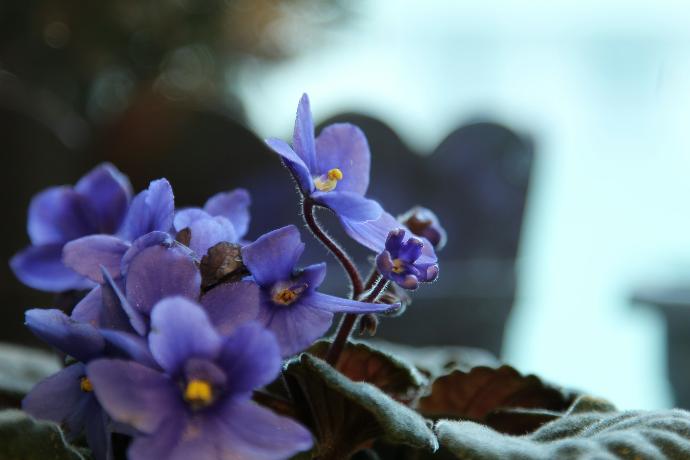
What Are The Different Types Of African Violet Plants?
1. Standard African Violet
A traditional variety with round, leafy leaves and growth habit.
2. Speciality or Novelty African Violets
Varieties with unique characteristics such as colourful leaves or unusual flowers.
3. Dream African Violet
It has a unique and eye-catching pattern on its leaves.
4. Next African Violets
They have a growing or cascading growth habit, making them ideal for hanging in baskets.
5. Semi-Miniature African Violets
Medium sized, medium structure and small.

How to care for African Violets ?
1. Location
Choosing the right location that meets these conditions will improve the health and well-being of your African violet plants.
2. Sunshine
African violet likes bright, indirect light. Place them where they will receive sunlight or in a north- or east-facing window. Do not leave it in direct sunlight for a long time as it will damage the leaves. Providing the correct light balance will promote healthy African violet growth and beautiful flowers.
3. Soil
Use well-drained, slightly acidic soil specifically formulated for African violets. You can find premixed African violets at garden supply stores. Since this plant is sensitive to excess water, make sure the soil is well-drained to avoid overwatering. Repotting every 6-12 months or whenever you notice soil compaction can help maintain healthy growth.
4. Hydration
African Violet It keeps the soil constantly moist but ensures that the water does not stagnate. Water when the top soil is dry to the touch. When watering, add water to the bottom of the container or pot so that the plant absorbs water from its roots. To prevent staining, do not put water on the leaves. Treat the water as often as the environment to maintain the balance between keeping the soil tidy and not too wet.
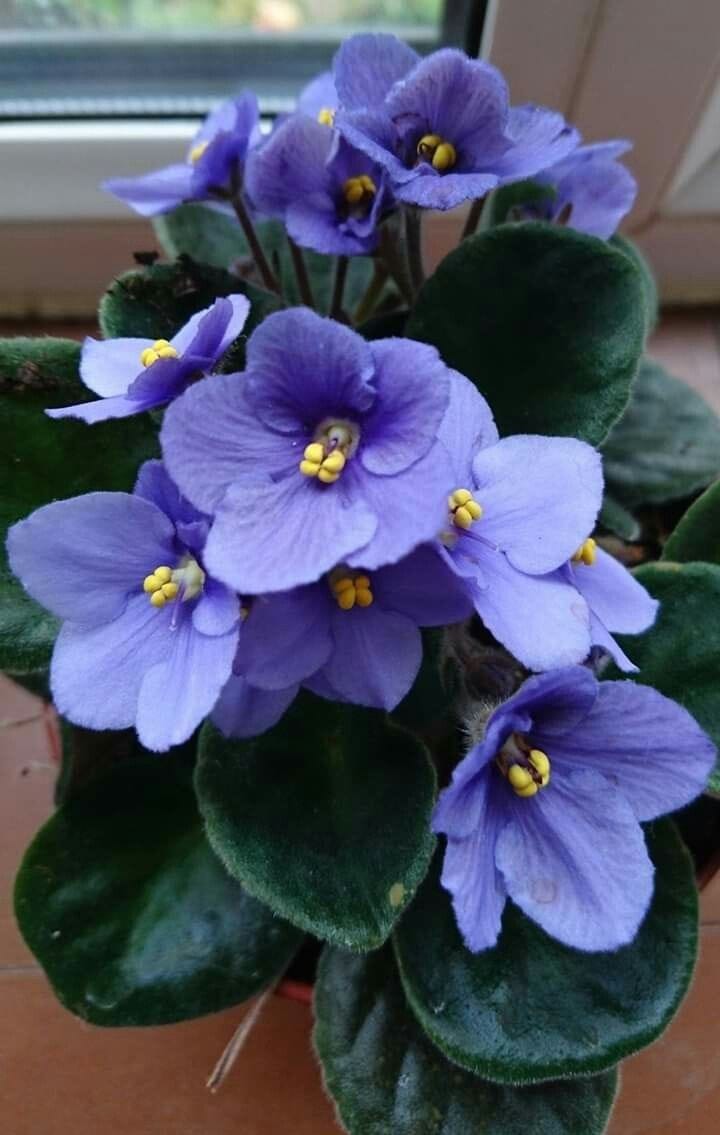
5. Nourishment
To care for African violets, use an equal amount of water in a ratio of 14-14-14 or 20-20-20. This represents the N-P-K (nitrogen-phosphorus-potassium) ratio in the fertilizer. Stimulates leaf and stem growth. Supports flower and root development. Helps the general health of the plant and its resistance to diseases. Dilute the fertilizer in half or a month and use every 2-4 weeks during the growing season (spring and summer). Be sure to follow product instructions and avoid overfertilization, which can harm your plants. Adjust frequency to your specific facility needs and response.
6. Issues
Make sure the soil is always moist but not waterlogged. It causes wilting and dryness. Water thoroughly, especially if the topsoil is dry. Too much or too little light will inhibit growth. Provide bright, indirect light and avoid direct sunlight. Sudden temperature changes can stress plants. Provide a stable environment. Make sure the soil is well-drained to prevent water intrusion. Aphids and spider mites can cause problems. Monitor regularly and treat with pesticides when necessary. Use balanced fertilizers to provide essential nutrients. Do not use too large pots as this will result in too much water. Republish if necessary. Check your African violets regularly for signs of these problems and take corrective action quickly to keep your plants healthy.
What are the Benefits of African Violets ?
African violet has many benefits: Its colourful flowers add beauty to any interior. Excellent care, suitable for beginners and experienced gardeners. Like many indoor plants, they improve air quality by eliminating pollutants. Good for small spaces as they are generally not too big. Cultivation of plants, including African violets, may benefit mental health. With proper care, African violets can bloom for a long time and provide constant pleasure. They can easily spread through leaves, allowing you to create new plants and share them with others. African violet to your home garden is not only a visual treat but also adds a positive and positive feeling to your home.
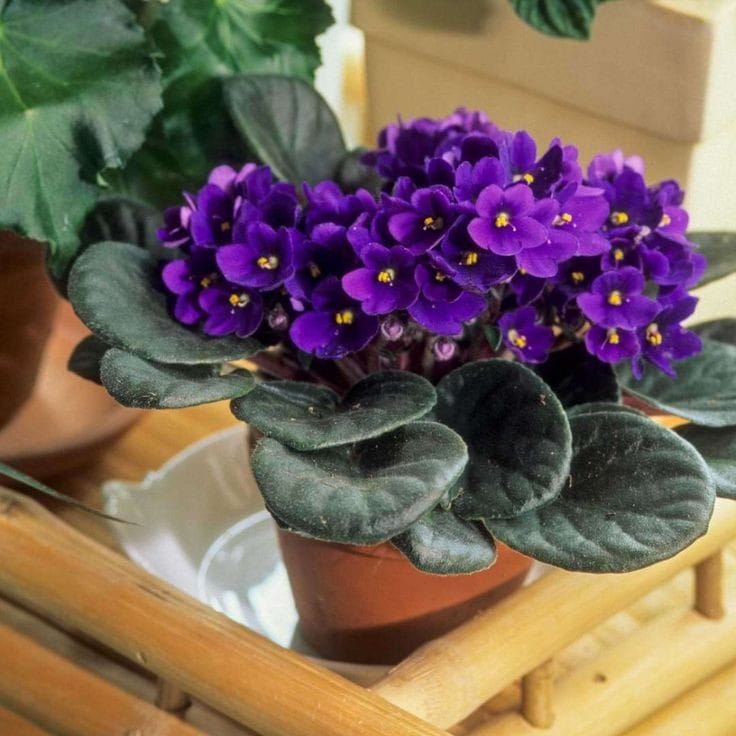
FAQs About Growing African Violets
1. How to care for African violets?
To control African violet plants: gives indirect light. Adjust location during changing seasons to maintain lighting. Keep the soil moist at all times but not waterlogged. Water when the top soil is dry. Use well-drained, slightly acidic soil. Repot as needed to improve the soil and give it a place to grow. Keep the temperature between 21-27°C (70-80°F). Keep humidity moderate and avoid temperature changes. Apply a water-soluble fertilizer every 2-4 weeks during the growing season. Adjust the frequency according to the factory setting. Remove dead or yellowing leaves and trim leggy growth to maintain bushiness. Monitor pests regularly and deal with them immediately if necessary. Insecticidal soap is effective against pests. The planting area must be suitable for air circulation and protection from excess. Constant care and attention to these conditions will help your African violets thrive and continue to produce beautiful flowers.
2. What are the uses of African violets?
African violet is grown mainly for decorative purposes because of its beautiful and attractive flowers. Although it doesn't have many medicinal or culinary properties, its benefits include: African violets are popular as houseplants, adding colour and beauty to homes and offices. They are great gifts due to their beautiful flowers and easy care. Growing and caring for African violets can be therapeutic; a hobby that promotes relaxation and reduces stress. Like many houseplants, they improve indoor air quality by eliminating pollutants. They can be easily propagated by leaves and offer a fun and easy-to-understand way to create new plants.
3. Can I grow African violets at home?
Yes, African violets are suitable for growing indoors. They thrive in a controlled indoor environment and can be grown as houseplants. Here are some tips for growing African violets indoors: gives indirect light. Place them near a north or east window, but avoid direct sunlight as it can burn their leaves. Keep the indoor temperature between 21-27°C (70-80°F) during the day and slightly cooler at night. Prepare for humidity. If the weather is dry, you can make soil around your plants, for example, put a pot of water nearby. Keep the soil moist at all times but not waterlogged. Watering from the bottom prevents water from touching the leaves. Use well-drained, slightly acidic soil designed specifically for African violets. Apply a water-soluble fertilizer every 2-4 weeks during the growing season. Growing African violets indoors can be a wonderful experience, adding colour and beauty to your interior.
4. What is the best pot to grow African violets?
Select a pot with a diameter of 1/3 to 1/2 the diameter of the spreading plant. African violets like a small crowd. Make sure pots have drainage holes to prevent build-up and ensure proper drainage. Use porous materials such as clay or ceramics. This helps maintain aeration and prevents excess water. Choose a pot deep enough to accommodate the roots. African violets have low roots. Consider using coloured pots to reflect light and not absorb too much heat. Place a bowl under the pot to catch excess water and prevent it from falling to the floor. In general, the important thing is to provide a well-drained area that prevents waterlogging and supports healthy African violet plants.
5. From where can I buy African violet plants ?
Check with your nearest nursery or nursery as they often stock a variety of plants, including African violets. A variety of African violets can be found in specialty stores or stores that focus on houseplants. There are many online sites and websites dedicated to selling plants. Make sure they have a good reputation and good reviews before purchasing. Local rose gardens, grocery stores or plant shops often have vendors selling a variety of plants, including African violets. Some botanical gardens or greenhouses may have plants for sale or souvenir shops where you can find African violets. When shopping, look for healthy plants with attractive foliage and check for diseases or pests.
